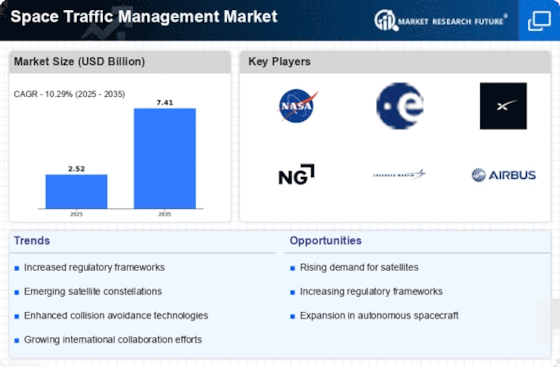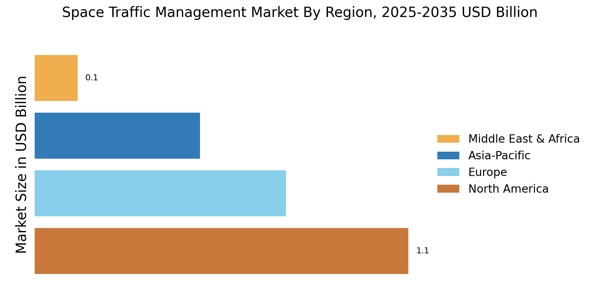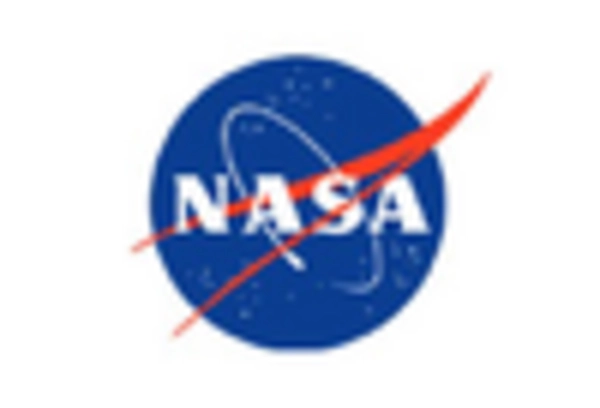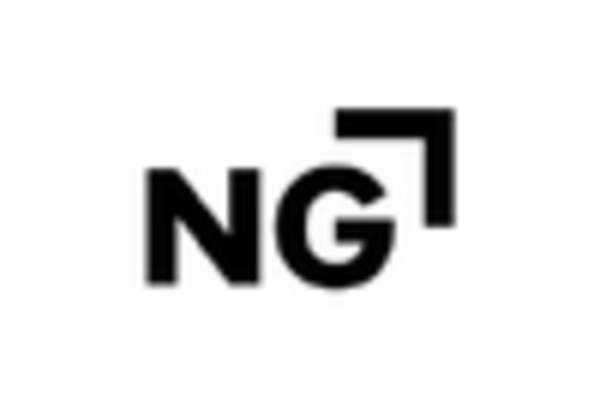Emerging Space Economy
The burgeoning space economy, characterized by increased investments in space exploration and commercial activities, is a crucial driver for the Space Traffic Management Market. With the rise of private space ventures and government initiatives, the demand for efficient traffic management systems is expected to escalate. The market is projected to reach a valuation of several billion dollars by the end of the decade, reflecting the growing recognition of the need for structured traffic management. This economic expansion is likely to foster collaboration among various stakeholders, including governments, private companies, and international organizations, to develop comprehensive traffic management frameworks.
Increased Satellite Constellations
The proliferation of satellite constellations, particularly for communication and Earth observation, is a primary driver of the Space Traffic Management Market. As companies launch large numbers of small satellites, the need for effective traffic management becomes paramount. For instance, the deployment of thousands of satellites by various private entities has raised concerns regarding collision risks and orbital debris. This situation necessitates the development of robust traffic management systems to ensure safe operations in increasingly crowded orbits. The Space Traffic Management Market is thus likely to see significant growth as stakeholders seek solutions to mitigate these risks and enhance operational safety.
Increased Awareness of Space Debris
The rising awareness of space debris and its potential hazards is a significant driver for the Space Traffic Management Market. As the number of satellites in orbit increases, so does the risk of collisions with debris, which can have catastrophic consequences. This awareness has prompted both governmental and private entities to prioritize the development of effective debris mitigation strategies and traffic management systems. The market is likely to see increased investment in technologies aimed at tracking and managing space debris, reflecting a collective effort to ensure the long-term sustainability of space activities. Consequently, the Space Traffic Management Market is poised for growth as stakeholders seek to address these pressing challenges.
International Regulatory Frameworks
The establishment of international regulatory frameworks is increasingly influencing the Space Traffic Management Market. As the number of active satellites continues to rise, the need for standardized regulations to govern space traffic becomes more pressing. Organizations such as the United Nations Office for Outer Space Affairs are working towards creating guidelines that promote safe and sustainable space operations. These regulations are expected to drive the demand for advanced traffic management solutions, as compliance with international standards will be essential for satellite operators. Consequently, the Space Traffic Management Market is likely to experience growth as stakeholders adapt to these evolving regulatory landscapes.
Technological Innovations in Tracking Systems
Technological innovations in tracking systems are significantly shaping the Space Traffic Management Market. Advances in satellite tracking technologies, such as improved radar systems and space-based sensors, enhance the ability to monitor and predict satellite movements. These innovations facilitate real-time data sharing among operators, which is crucial for collision avoidance and effective traffic management. As the market for these technologies expands, stakeholders are likely to invest in developing more sophisticated tracking solutions. This trend indicates a growing recognition of the importance of technology in ensuring the safety and sustainability of space operations, thereby propelling the Space Traffic Management Market forward.


















Leave a Comment